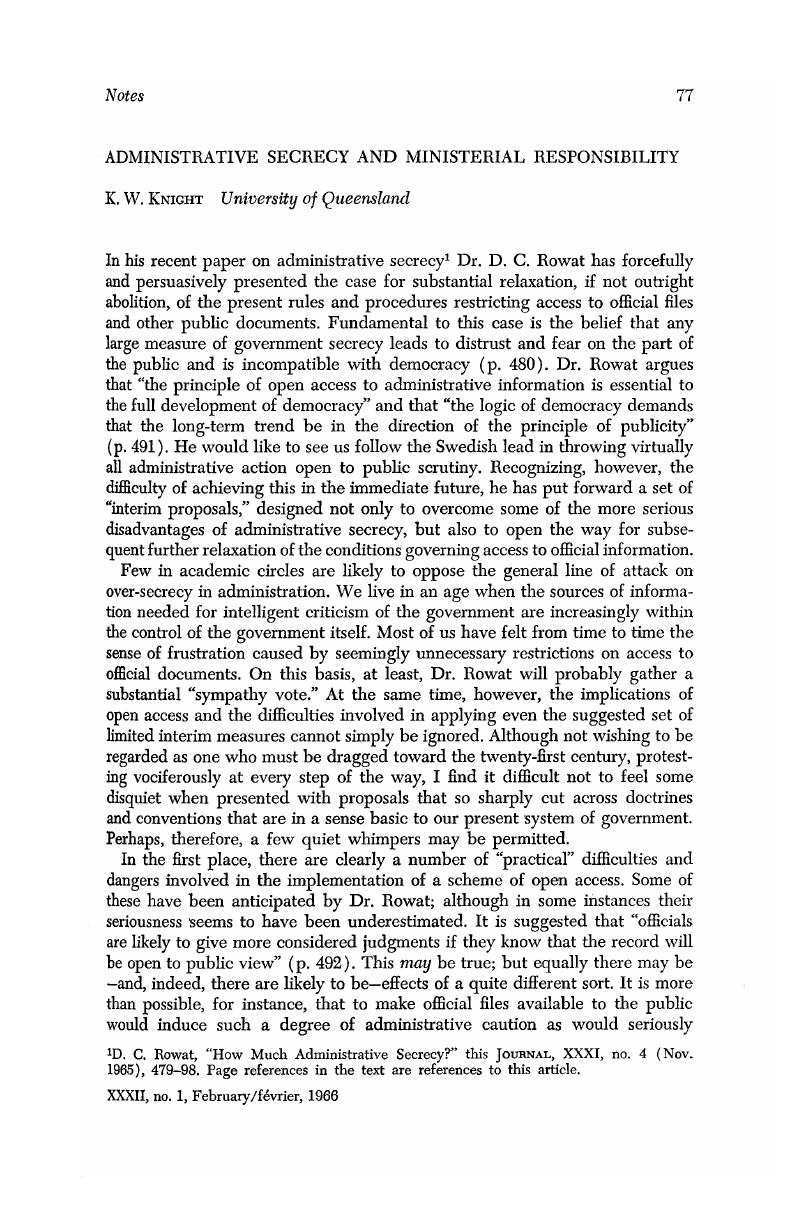Article contents
Administrative Secrecy and Ministerial Responsibility
Published online by Cambridge University Press: 07 November 2014
Abstract

- Type
- Notes
- Information
- Canadian Journal of Economics and Political Science/Revue canadienne de economiques et science politique , Volume 32 , Issue 1 , February 1966 , pp. 77 - 84
- Copyright
- Copyright © Canadian Political Science Association 1966
References
1 Rowat, D. C., “How Much Administrative Secrecy?” this Journal, XXXI, no. 4 (11 1965), 479–98.Google Scholar Page references in the text are references to this article.
2 Cf. Schellenberg, T. R., Modern Archives (Melbourne, 1956), pp. 225 ff.Google Scholar
3 As it is, the telephone may be regarded as “the great robber of history.” See Hasluck, Paul, “Problems of Research on Contemporary Official Records,” Historical Studies: Australia and New Zealand, V, no. 17, (11 1951).Google Scholar
4 Chapman, Brian, “The Ombudsman,” Public Administration (London), XXXVIII (Winter, 1960), 308.Google Scholar
5 Parker, R. S., “Official Neutrality and the Right of Public Comment,” Public Administration (Sydney), XX, no. 4 (12 1961)Google Scholar, and XXIII, no. 3 (Sept. 1964). Chapman, Brian, British Government Observed: Some European Reflections (London, 1963).Google Scholar
6 Kitson Clark, G., “‘Statesmen in Disguise’: Reflexions on the History of the Neutrality of the Civil Service,” Historical Journal, II, no. 1 (1959), 19.CrossRefGoogle Scholar
7 Though there are still quite stringent restrictions of some types. To obtain a pass early last year for entry to the Executive Building in order to use the Bureau of the Budget's Library, for instance, I had to be “screened” and fingerprinted. This process took about two weeks.
8 Cf. Chapman, , “The Ombudsman,” 308.Google Scholar
9 Cf. Chapman, , British Government Observed, 39.Google Scholar
- 1
- Cited by


